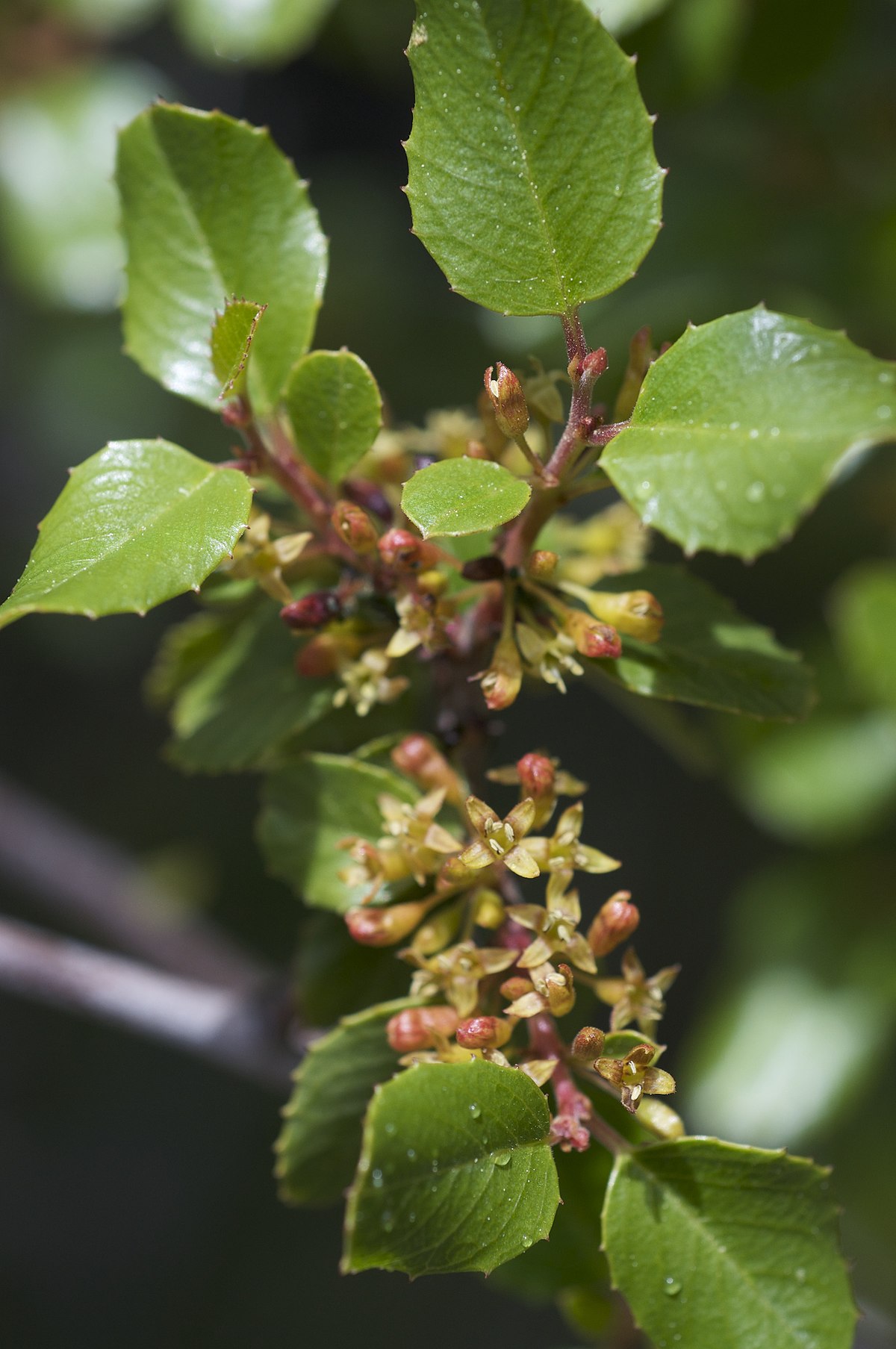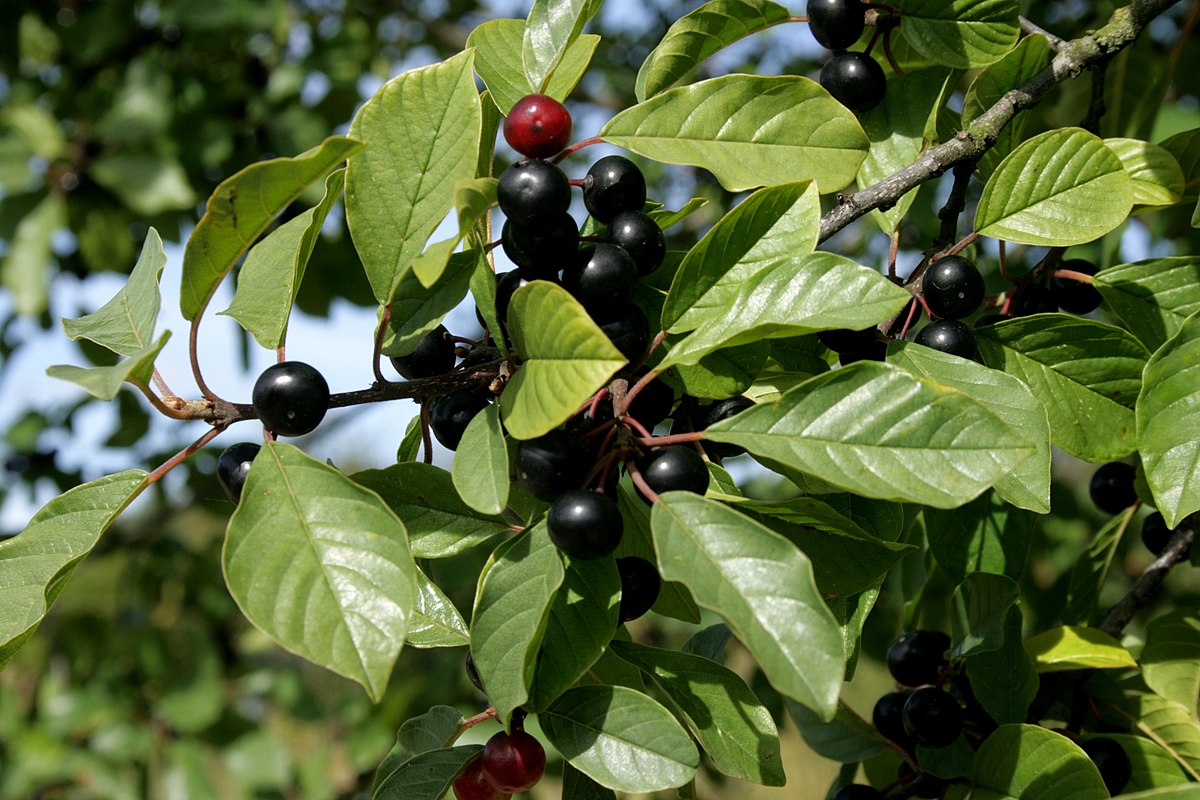Rhamnus: The Unsung Herbal Hero
Rhamnus is a genus of shrubs and trees that are native to temperate and tropical regions around the world. There are over 200 species in the genus, and they are known by a variety of common names, including buckthorn, cascara sagrada, and hollyhock.
Rhamnus species have a long history of use in traditional medicine, and they are still used today for a variety of health conditions. Some of the most common uses for Rhamnus include:
- Constipation: Rhamnus species are astringent, which means that they help to tighten and tone the tissues of the digestive tract. This can help to relieve constipation by making it easier for stool to pass through the intestines.
- Diarrhea: Rhamnus species can also be used to treat diarrhea. The astringent properties of these plants help to reduce inflammation and irritation in the digestive tract, which can help to slow down the passage of stool and make it more solid.
- Inflammation: Rhamnus species have anti-inflammatory properties, which can help to reduce inflammation in the body. This can be helpful for a variety of conditions, including arthritis, gout, and inflammatory bowel disease.
- Diabetes: Rhamnus species have been shown to help improve blood sugar control in people with diabetes. This is likely due to the plant's high fiber content, which helps to slow down the absorption of sugar into the bloodstream.
- Cancer: Some studies have shown that Rhamnus species may have anti-cancer properties. However, more research is needed to confirm these findings.
Main Content
In addition to the health benefits listed above, Rhamnus species also have a number of other potential benefits. For example, some studies have shown that these plants may help to protect the liver, improve heart health, and boost the immune system.
Rhamnus species are generally safe for most people to use. However, it is important to note that these plants can have side effects, such as nausea, vomiting, and diarrhea. It is also important to avoid using Rhamnus species if you are pregnant or breastfeeding.
If you are interested in using Rhamnus species for medicinal purposes, it is important to talk to your doctor first. They can help you to determine if these plants are right for you and can advise you on the best way to use them.
Conclusion
Rhamnus is a genus of plants with a long history of use in traditional medicine. These plants have a variety of potential health benefits, including relief from constipation, diarrhea, inflammation, diabetes, and cancer. However, it is important to note that Rhamnus species can have side effects, so it is important to talk to your doctor before using them.
Rhamnus is a genus of about 140 species of shrubs or small trees, commonly known as buckthorns. These plants are found throughout the temperate and subtropical Northern Hemisphere, as well as in some parts of the Southern Hemisphere. Rhamnus species are known for their small, simple leaves, which are often arranged in opposite pairs. The flowers of Rhamnus are small and inconspicuous, and they are typically followed by small, black fruits.
There are many different species of Rhamnus, each with its own unique characteristics. Some of the most common species include common buckthorn (Rhamnus cathartica), alder-leaf buckthorn (Rhamnus alnifolia), and cascara buckthorn (Rhamnus purshiana). These species are all native to North America, and they are often used as ornamental plants or for their medicinal properties.
If you are interested in learning more about Rhamnus, I encourage you to visit the Garden Wiki. This website provides a wealth of information about the genus, including its taxonomy, distribution, ecology, and uses. You can also find photos of different Rhamnus species, as well as links to other resources.
FAQ of rhamnus
Q1. What is rhamnus?
A. Rhamnus is a genus of about 150 species of shrubs and trees in the buckthorn family (Rhamnaceae). They are found in temperate and subtropical regions around the world. Rhamnus species are known for their hard, thorny stems and their small, often edible fruits.
Q2. What are the medicinal uses of rhamnus?
A. Some species of rhamnus have been used in traditional medicine for centuries. The most well-known medicinal use of rhamnus is for its laxative properties. The ripe fruits of Rhamnus cathartica, commonly known as common buckthorn, are a strong purgative that can be used to treat constipation. Other species of rhamnus, such as Rhamnus frangula, have also been used to treat diarrhea, dysentery, and other digestive disorders.
Q3. What are the other uses of rhamnus?
A. In addition to its medicinal uses, rhamnus has a number of other uses. The wood of some species of rhamnus is hard and durable, and it has been used to make furniture, tool handles, and other objects. The bark of some species of rhamnus has been used to tan leather. The leaves of some species of rhamnus have been used to make dyes.
Q4. Is rhamnus safe to use?
A. Rhamnus is generally safe to use when used as directed. However, it is important to note that rhamnus can be a strong laxative, and it should not be used by children or pregnant women. If you are considering using rhamnus for medicinal purposes, it is important to talk to your doctor first.
Q5. What are some common side effects of rhamnus?
A. The most common side effects of rhamnus are diarrhea, abdominal cramps, and nausea. In some cases, rhamnus can also cause vomiting, headache, and dizziness. If you experience any of these side effects, you should stop taking rhamnus and talk to your doctor.
Image of rhamnus
- Rhamnus catharticus, also known as buckthorn, is a shrub or small tree with white flowers and black berries.

- Rhamnus frangula, also known as frangula, is a shrub or small tree with yellow flowers and red berries.
- Rhamnus ilicifolia, also known as California buckthorn, is a shrub or small tree with spiny leaves and yellow flowers.

- Rhamnus purshiana, also known as cascara sagrada, is a shrub or small tree with yellow flowers and brown bark.

- Rhamnus alaternus, also known as Mediterranean buckthorn, is a shrub or small tree with evergreen leaves and white flowers.

Post a Comment for "Rhamnus: The Unsung Herbal Hero"